When I first got into tea, I didn’t think much about what I was drinking. I liked the taste, it gave me a little bit of extra energy, and it was a nice alternative to coffee – which I hated at the time. I had no idea there were so many different types of tea!
So over the years, I started to become more and more intrigued by the world of tea. Trying out different kinds of tea and realizing that the tea world is so much bigger than my cup of Earl Grey.
If you’re just discovering this huge world of tea, here are some tea basics to know about the different types of teas.
Psst! This blog post contains affiliate links in it which sends me a bit of extra money if you use them… at no extra cost to you!
Have the perfect cup of tea
An electric kettle: the Bay.com | Amazon.com
Filters or steeper: DavidsTea
Loose Leaf Tea: DavidsTea | Whittard of Chelsea | Adagio
Related posts to read…
The Ultimate Beginner’s Guide To Matcha | Tea Bag Vs. Loose Leaf Tea: Why & How You Should Switch
Different Types Of Teas All Stem From Camellia Sinsensis
There are six different types of teas (white, green, yellow, oolong, black, and dark) and they all come from one plant – the Camellia sinensis. Yup! One plant can produce all the different types of teas – pretty impressive right!
The Camellia sinensis is a shrub or small tree that grows in China, India, East Asia, and Sri Lanka (Ceylon teas). You use the leaves and leaf buds to make tea (or even the stems and twigs for twig tea!).
The difference between each tea comes from how they’re processed, and can even include different parts of the plant.
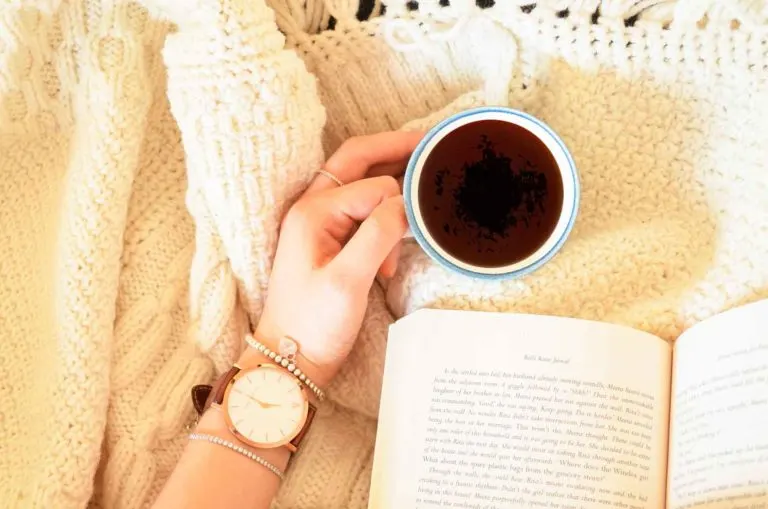
Does That Mean Herbal Tea Isn’t Actually Tea!
To be considered tea it has to be from the Camellia sinensis plant. So yes, that means herbal teas are not actually tea. Herbal teas are more formally called Tisanes.
This includes all your favourites from mint to chamomile. It’s all the herbal, floral, fruity, and spiced ones. These contain no caffeine. My personal favourite are Bigelow’s Cranberry Apple, and Four O’clock’s Truffle Mint. But I won’t complain about any of the classics like mint, lemon, or chamomile either.
You can still get some great health benefits from the different herbal teas though. Depending on what you want out of it, and it’s super easy to make your own.
You might also be interested in reading…

Also All Tea Has Caffeine… But It’s Different From Coffee
So all Camellia sinensis tea is caffeinated, but they do contain different amounts of caffeine (this is based on the processing of the tea leaves – continue reading to find out more!). Typically, black tea will be the most caffeinated, and white tea is the least.
If you’re not a caffeine lover, don’t worry, the caffeine in tea is very different from the caffeine in coffee. You’ll notice that when you drink coffee, you feel the effects right away. It’s an instant energy booster. Tea, on the other hand, has a slower burn-in effect.
This slow burn effect is because tea contains what’s called theanine. Theanine is better for people who really feel the effects of coffee. You know, the instant high, but then the complete crash after it wears off. The effects of tea are a lot more subtle. Mostly because there’s less caffeine, but also because it’s slower to process it. It’s more of an even distribution of energy.

You might also be interested in reading…
5 Healthy Coffee Alternatives With Caffeine To Keep You Going All Day Long
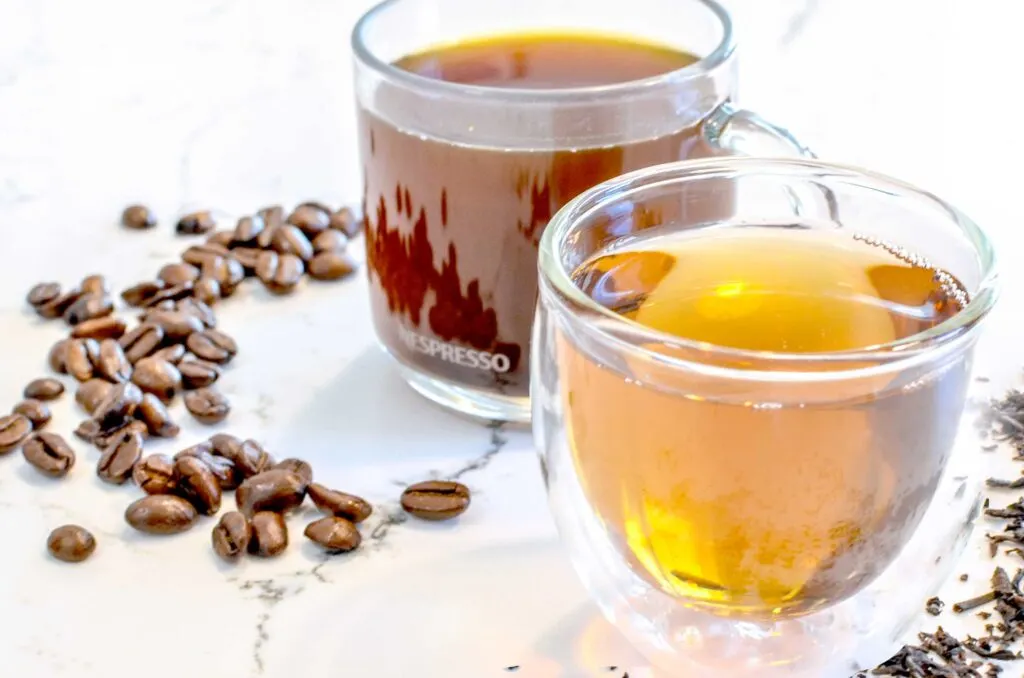
Tea Basics: How Do You Get Camellia Sinensis Tea?
The reason you can get so many different types of teas from just one plant is mainly due to the different combination of processes the leaves go through before and after being plucked.
Before the leaves are plucked, you can give them different amounts of sunlight. Depending on when they’re plucked (earlier or later in the year) they will produce a different kinds of tea.
Then there are 4 core processes that the Camellia sinensis tea leaves can go through after being plucked. The combination of each process, with different times and temperatures, gives you the different types of teas. The 4 processes include: withering, rolling, oxidization, and drying.
So the type of tea you get will depend on which 4 processes you put the leaves through. It’s a different combination for each tea.

1. The Withering Process
After plucking the leaves, they automatically start the withering process. This is when the leaf starts loosing water and begins drying out.
These days, this can be controlled to speed up the withering process. It can be controlled by bringing the tea leaves indoors and adjusting the humidity in the air.
The step is important for the leaves to develop an aroma and flavour compounds.
Build & Track Your Tea Journey
Refine your tea palette with my Tea Tasting Journal to record and take notes on every new tea you try.
2. The Rolling Process
The rolling process is essentially when the leaves are shaped. They take on either a rolled, twisted, or curled leaf. This process was originally done by hand, but today you can also use a machine.
Today, the leaves are placed in a tumbler that slightly heats up the leaves. This breaks down their structure and causes them to ‘roll’, or twist up.
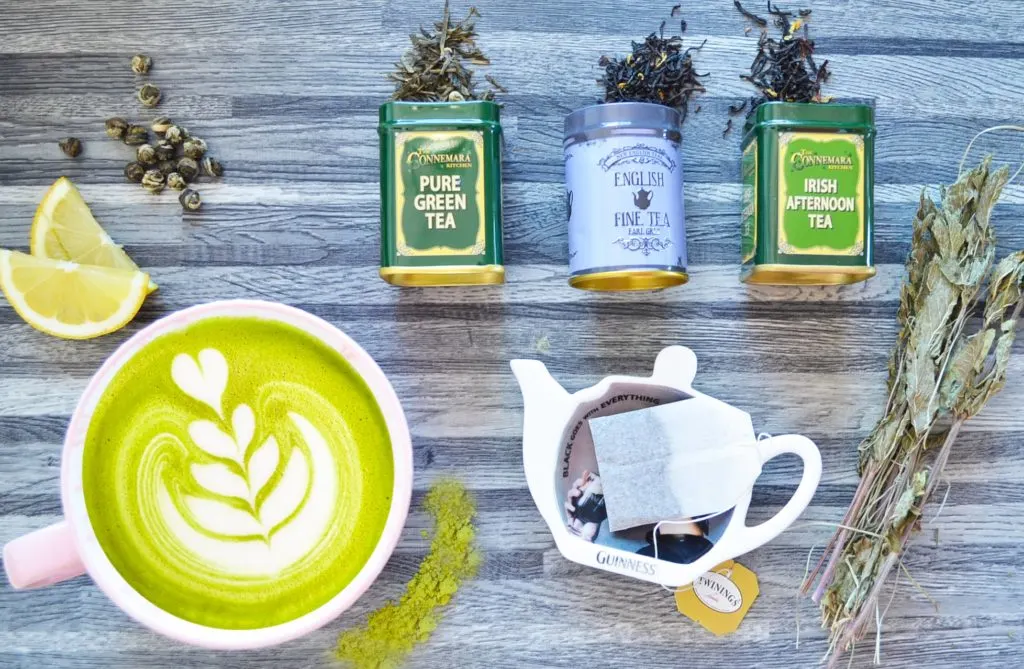
3. The Oxidization Process
Oxidization is when the leaves chemically react to the air. To do this, the leaves are spread out on a table and left for a few hours in a humid environment.
The longer you leave them to oxidize, the darker the colour of the leaves will be. This is how you get the different green vs. black leaves and brew colours.
4. The Firing/ Drying Process
The drying process stops the oxidization process from continuing. There are several methods to dry tea leaves depending on which Camellia sinensis tea you’re making. This process originally used a basket or wok over charcoal. These days most teas are dried in a large tumble dryer.
You might also be interested in reading…
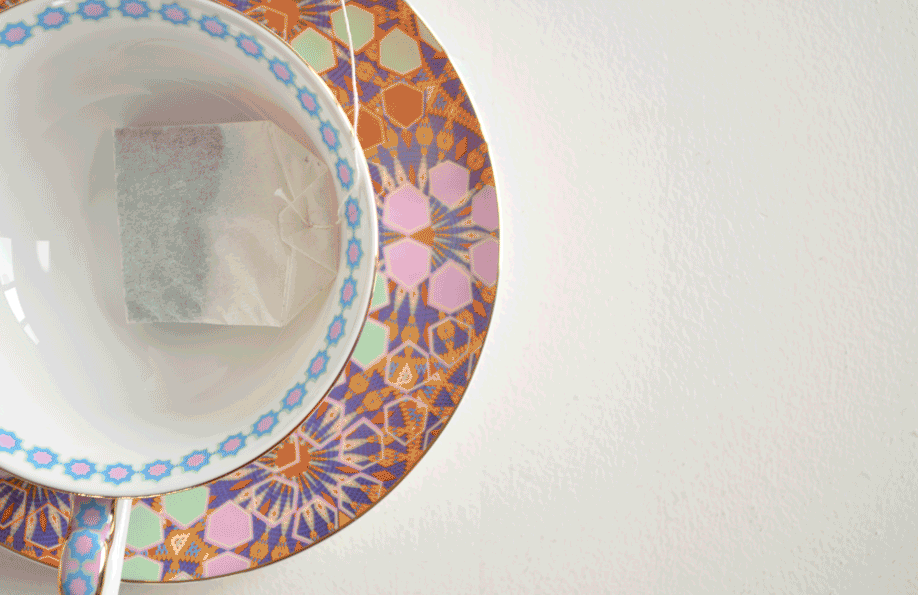
How Many Different Types Of Tea With Caffeine Are There?
There are six types of tea with caffeine from the Camellia sinensis plant: white, green, oolong, yellow, black, and dark.
White Tea
This is the youngest and least processed of all Camellia sinensis tea. It’s typically harvested from China (mostly from the Fujian province). It’s not called white tea because of the light hue when brewed, but because of the white fuzz you can see on the leaves when plucked. This bud is simply plucked and left alone to wither and dry.
White tea is picked the earliest and oxidized the least. By default, it’ll have the lightest colour when brewed which is a pale yellow colour. White tea still has caffeine, but it’s the least out of all the different types of teas. Despite going through the least processes, it takes the longest to make. That’s because white tea is withered for about 2 days – the longest out of any of the types of teas.
Typical brew temperature is between 76 and 85 degrees celsius. You never want to use boiling water. These are young delicate leaves that you’ll burn if the water is too hot. Using water that’s too hot will affect the flavour of the tea.

Green Tea
Green Tea is not oxidized (or oxidized very little – and that’s why the leaves keep their green colour). Green tea most resembles the original leaf. Once it’s plucked it’s dried right away, either by steaming or frying them. Then they’re rolled and dried once again to preserve the leaves.
Green tea is the only type of tea you can pick the leaves in the morning and enjoy the tea that evening. It looks yellow or green when brewed. It’s typically harvested from China or Japan (read more about the different types of Japanese green tea… there are A LOT!).
Like white tea, the typical brew temperature is between 76 and 85 degrees Celsius. You never want to use boiling water.
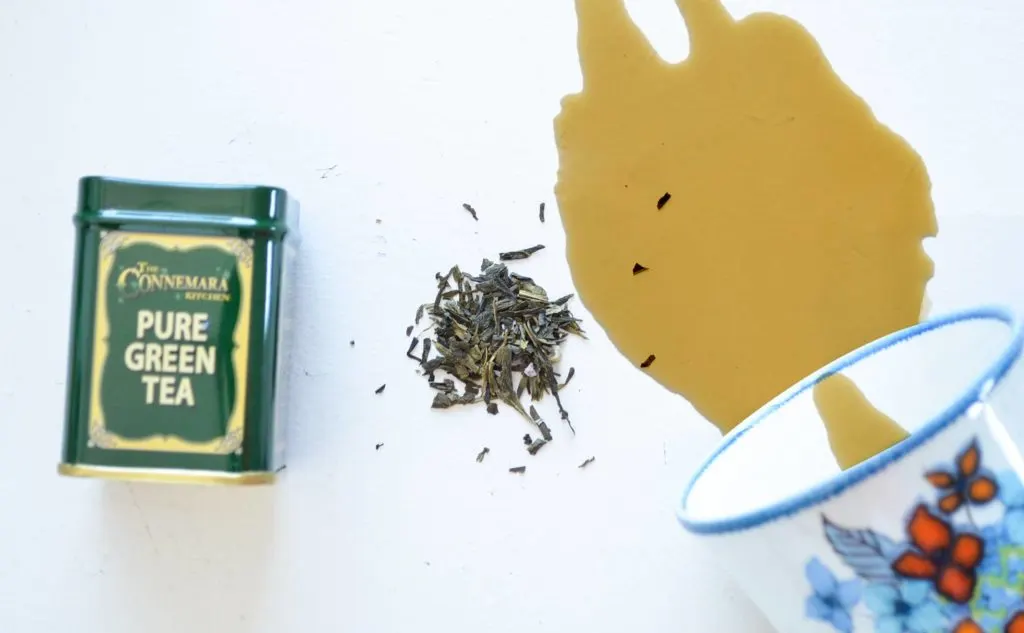
Popular Type Of Green Tea: Matcha
Matcha is all the craze right now for its abnormal amount of health benefits (read more about it here). It’s actually a powder made from the green tea leaves. But! you can’t make matcha powder from just any green tea leaf. You have to pluck the young leaves that have been shade grown (so very little to no sun).
By minimizing the amount of sun the plant gets, it boosts the amount of caffeine and antioxidants. You also get more of these benefits because you’re actually drinking the powder instead of just brewing the leaves.
But because you’re drinking the whole leaf, you have to be careful buying matcha. Make sure to buy organic matcha, and if you’re able to, ask if it’s been radiation tested.
You might also be interested in reading…

Yellow Tea
Yellow tea is a rare type of Camellia sinensis tea compared to green, white, oolong and black. It’s only produced in a few areas so it isn’t common and there isn’t a lot to export. It follows a similar process to making green tea but it takes more time and effort.
Yellow tea has a delicate flavour and goes through what’s known as the Yellowing process (heaping). The leaves are laid out in piles on a damp cloth for several hours. This actually makes the leaves have a slightly yellow hue afterwards (how it get’s its name) due to the mixture of heat and humidity.
Shop Yellow Tea
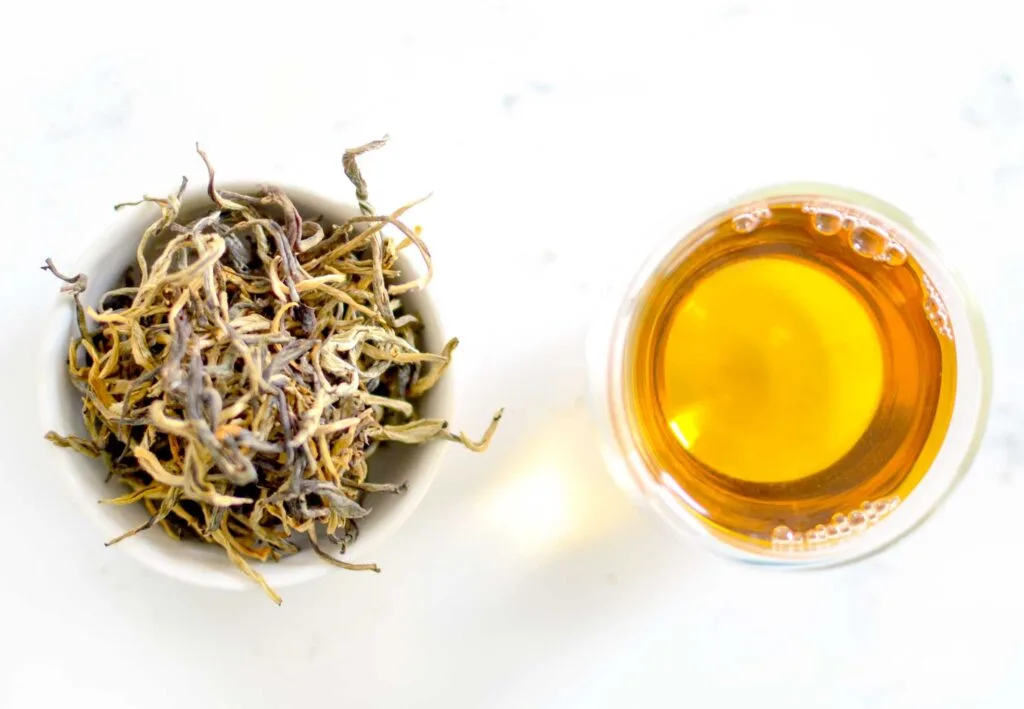
Oolong Tea
Oolong is a traditional Chinese tea. It’s semi-oxidized placing it somewhere in the middle between green and black tea To get oolong tea, it undergoes 3 steps of the process (withering, oxidizing, and drying). For Oolong, you pluck 3-4 leaves and a bud.
They go through a very interesting process to produce. The Camellia sinensis tea leaves are placed in a bamboo shaker to bruise and destroy the leaves. This helps release the flavour during oxidization. The leaves are then fire dried to stop oxidization process.
There are several varieties of Oolong produced depending on where it’s cultivated from. The differences can give the tea a sweet, fruity, woody, or roasted aromas.
Because the leaves have oxidized more, you want a bit of a hotter brewing temperature. Closer to about 90 degrees Celsius.
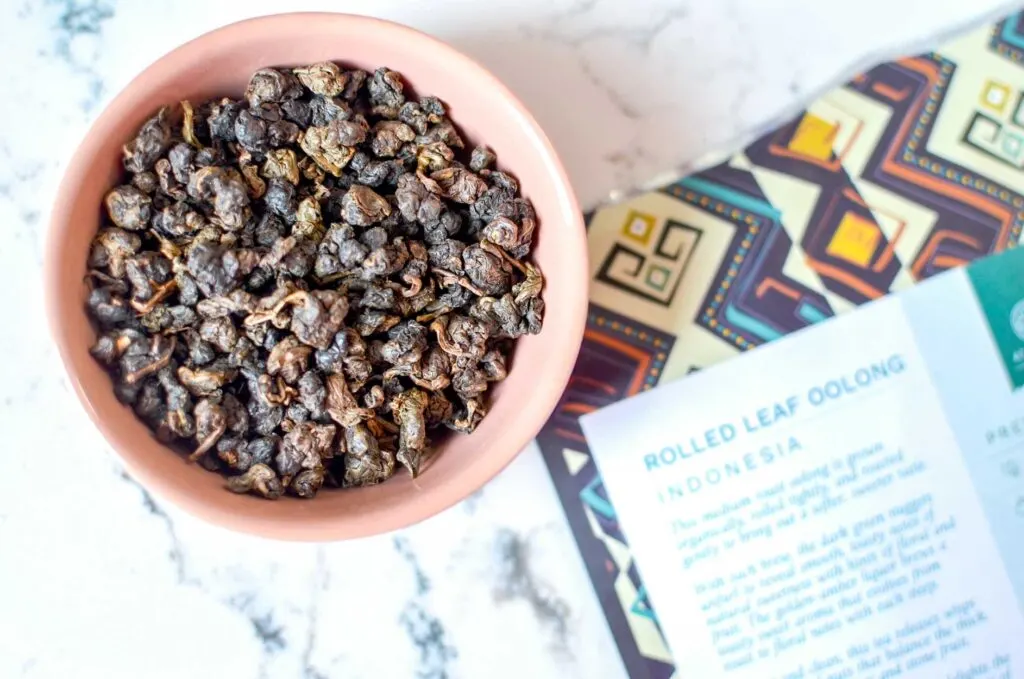
Black Tea
Black tea is the most popular types of tea with caffeine from the Camellia sinensis plant. It goes through all four steps of the process.
Black tea a fully oxidized tea that’s oxidized for the longest out of any teas. That’s why they’re the darkest when brewed, have the strongest flavour, and most caffeine (but don’t worry, it’s still less than coffee).
You might also be interested in reading…
You also have several varieties (depending on where they’re grown) and blends of black tea. Common varieties are Darjeeling, Ceylon, and Assam. Common blends include English Breakfast (yes that’s a blended tea!), Earl Grey, and Chai tea!
To brew black tea you want HOT boiling water to fully bring out the aromas and flavours.
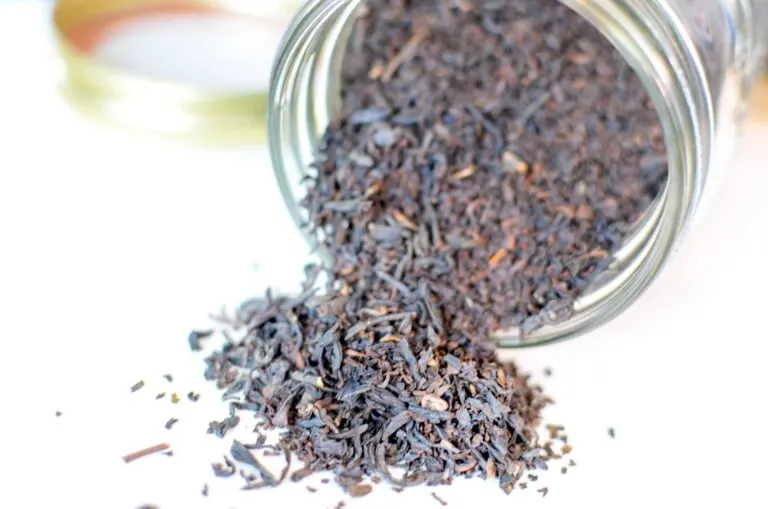
Kinds Of Tea: Black Tea Blends
Black tea is a very popular tea to make tea blends with due to it’s high caffeine levels. It makes it an ideal tea for breakfast and that’s why you have different types of breakfast teas. These are black tea blends that include different varieties of black tea. Read more about the difference between breakfast teas here.
My favourite black tea blend though is Earl Grey. Traditionally, Earl grey tea is black tea mixed with the rinds of bergamot, but today it’s more common to use bergamot essential oil. Bergamot is a citrus that kind of looks like an orange mixed with lemon.
Similarly, chai tea is in fact another very popular black tea blend. This is your favourite spiced tea with cardamom, cinnamon, and other spices. But the base for this tea is in none other than black tea!
You might also be interested in reading…
Finding The Best Earl Grey Tea: A Comparison Between Popular Tea Brands
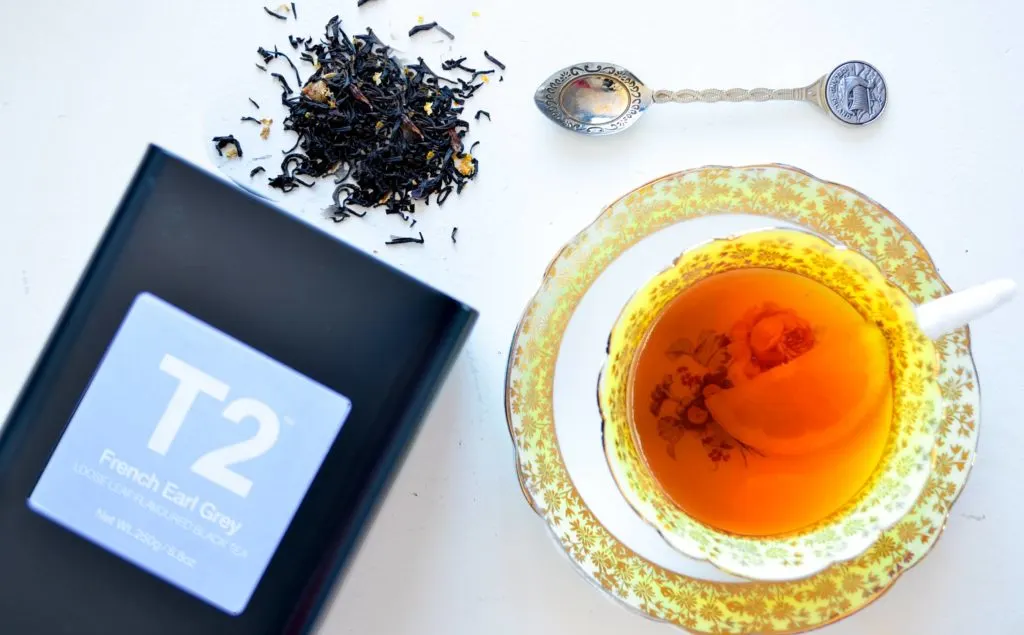
Dark Tea (Pu’erh)
Dark tea is aged and fermented tea. You can have green and black varieties of dark tea. Both versions have complexity and smoothness that their non-fermented counterparts don’t have. They also have added health benefits that develop out of the ageing process.
Pu’erh (pronounced Poo-errr) is the original aged tea and the most popular type of dark tea. To be called Pu’erh it has to come from the Yunnan region in China. Otherwise, it’s just simply dark tea.
Dark tea is not like the loose leaf tea you’re used to either. It’s been tightly packed into what’s called a “cake”.

Other Types Of ‘Teas’ You May Have Heard About
Rooibos Tea
You might have seen a lot of rooibos options at your local tea establishment. Because rooibos is not from the Camellia sinensis plant, it is in fact a tisanes. Rooibos is a plant (well a shrub) from Africa. Just like Camellia sinensis tea you use the leaves of the rooibos shrub.
Rooibos tea is naturally sweet and can have a nutty flavour. It’s often used in tea blends, a popular blend is a chocolate mint rooibos tea (see it on Amazon here).
Rooibos is also called African Red tea, or simply – Red Tea. It’s also very similar to Honeybush tea which is sweeter than rooibos even. Like all other tisanes, rooibos is an herbal tea that does not contain any caffeine.
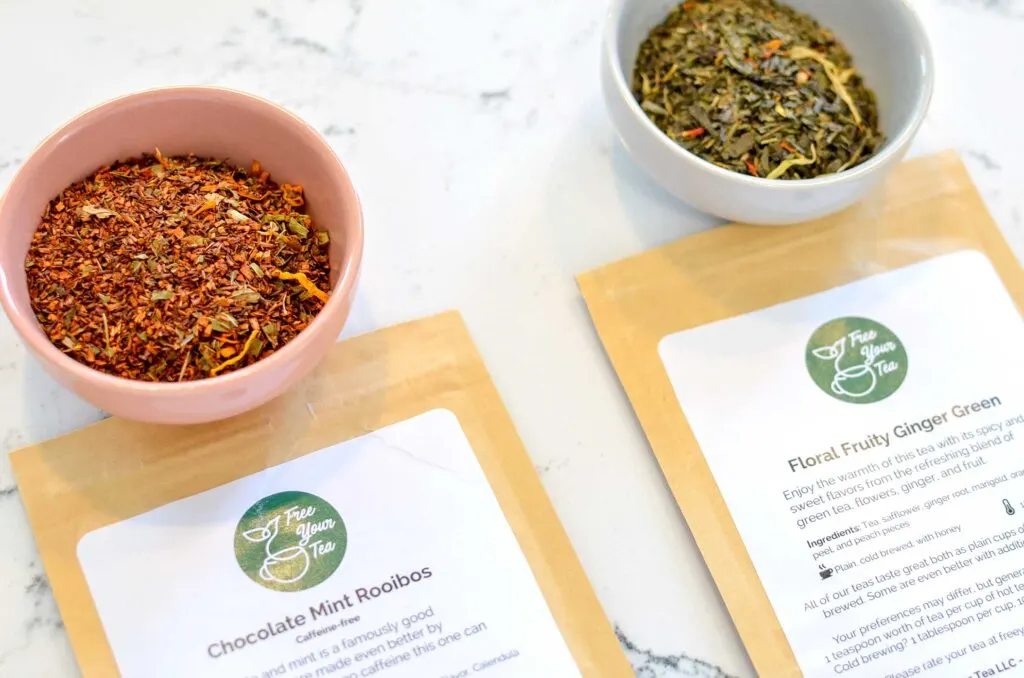
Yerba Mate
Yerba mate is a really interesting type of tea. It’s technically a tisanes because it isn’t from the Camellia sinensis plant, BUT, it actually contains caffeine.
Yerba mate comes from the Ilex paraguariensis plant, typically found in South America.
Here’s everything there is to know about yerba mate tea, read about my first time trying it, and before you try it, read about its risks and benefits.
Taste Tea Where You Are!
Taste tea on the go with my pocket size tea tasting log book on Etsy.
This printable digital download tea tasting journal also comes with a tea tasting guide inside.

Quick Links – My Amazon Tea Favourites
Related Posts
- How To Make Tea – Brew The Perfect Cup Every Time!
- 11 Tea Books You Should Read
- 11 Popular Types Of Black Tea You Should Try (&Why!)
- What Are The Different Types of Japanese Green Tea?
- Tea Time Essentials: The Top 5 Best Kettles For Tea
Click Image To Share Or Save For Later
Last update on 2024-04-20 / Affiliate links / Images from Amazon Product Advertising API


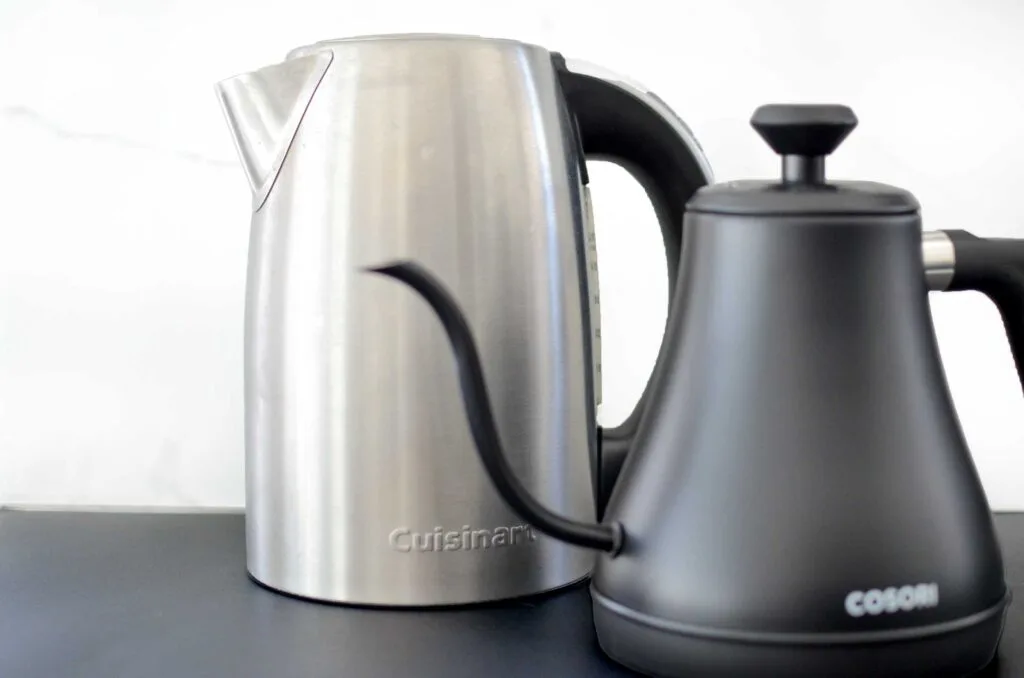
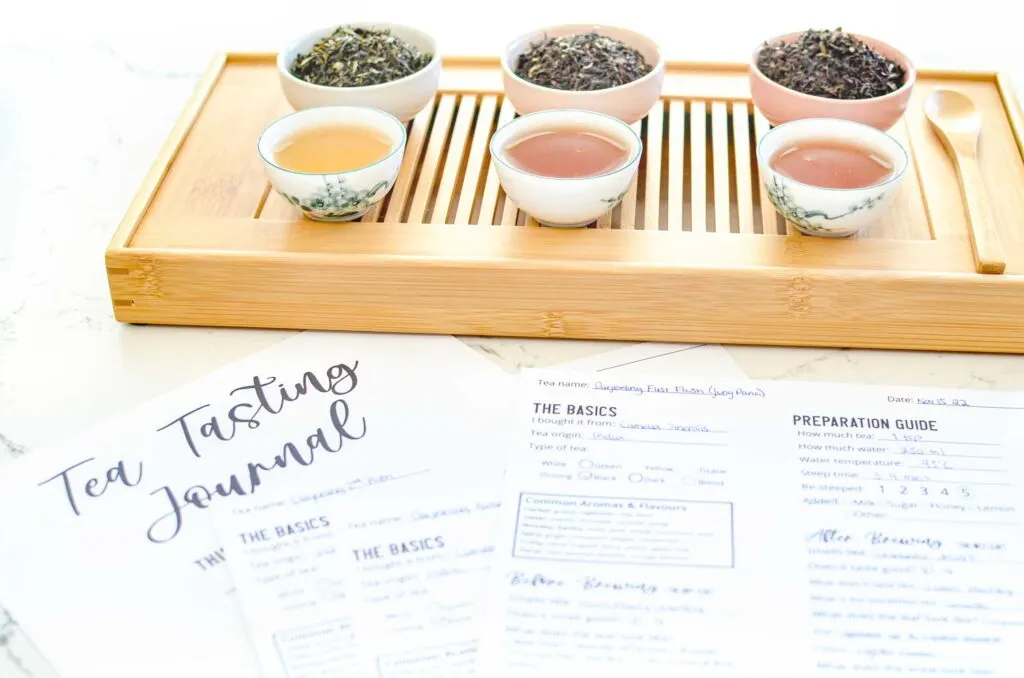





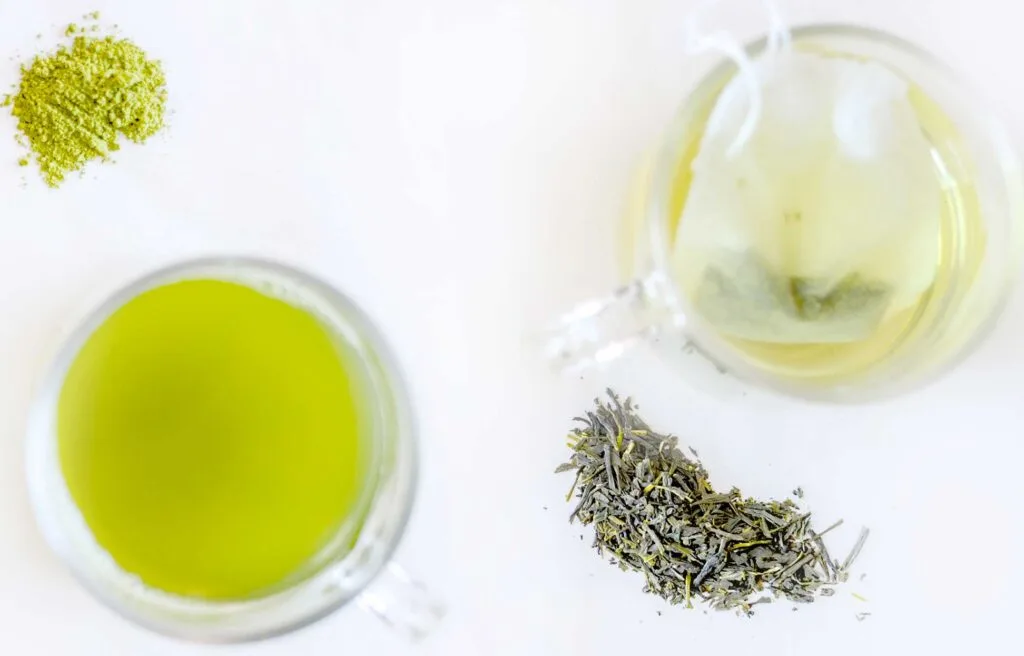










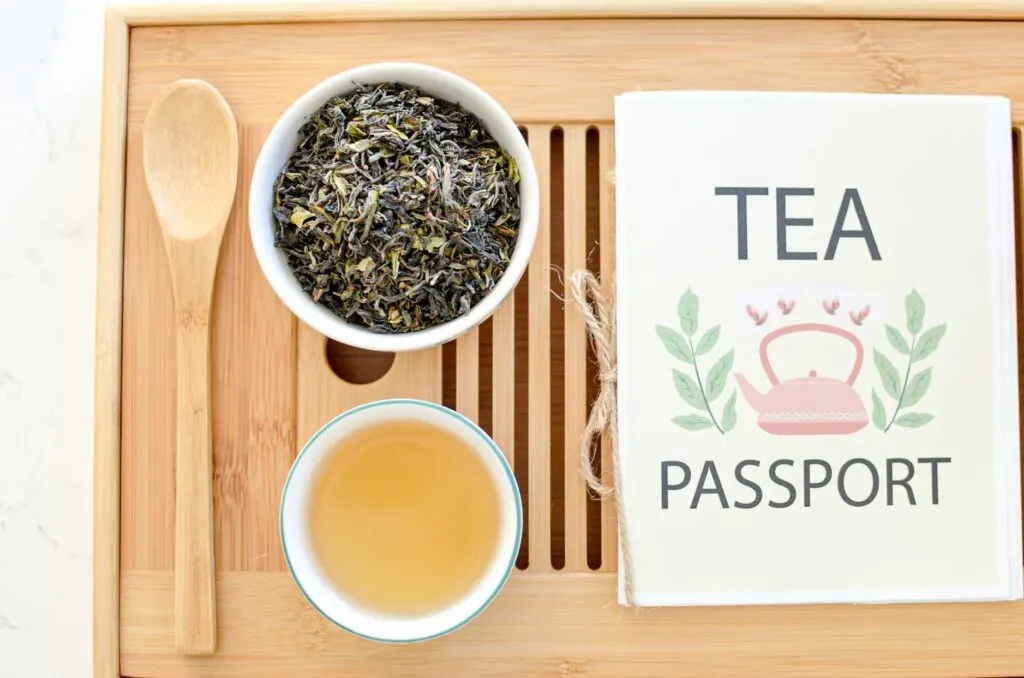




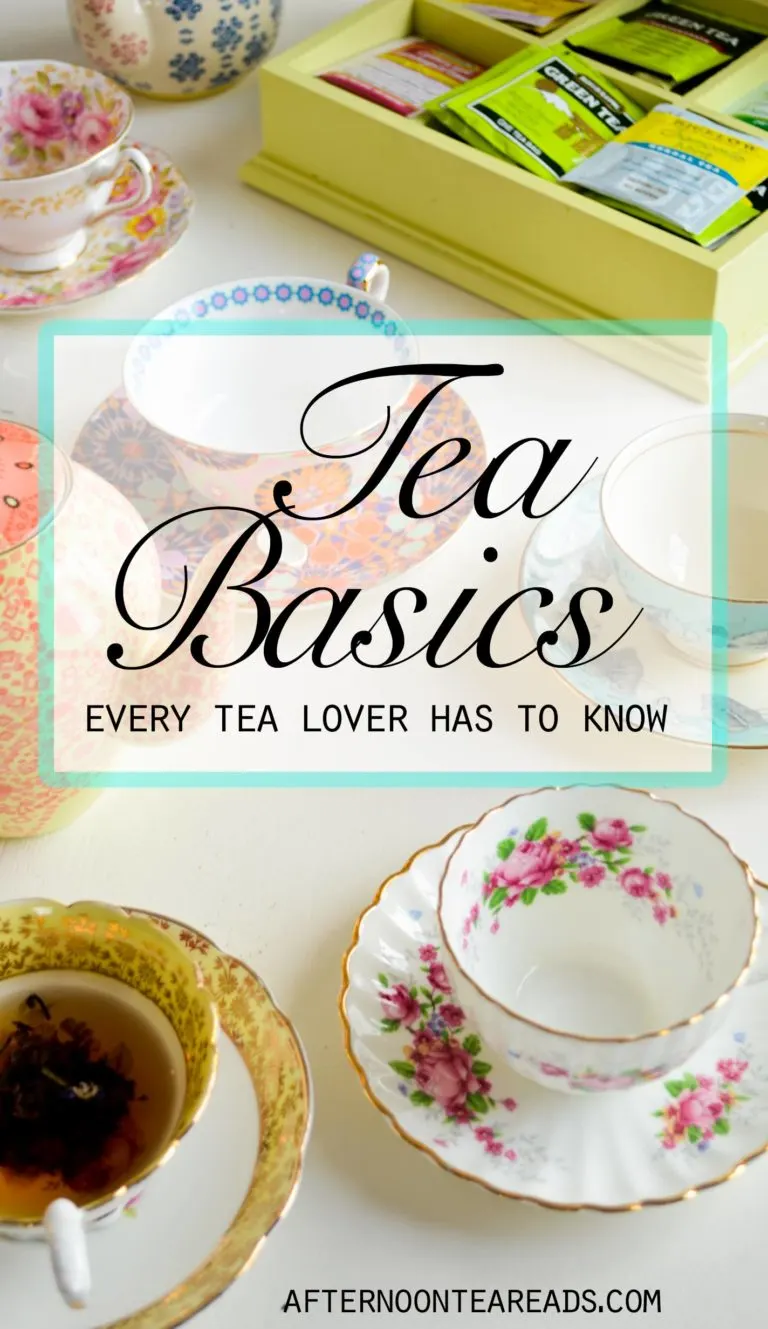

Nairobi Coffee
Tuesday 24th of December 2019
I read with interest your article about basics information for tea lovers which is quite comprehensive. You have also includes Roobois. Roobios is actually a plant (well a shrub) from Africa. Just like camellia Sinensis you use the leaves to make tea.
admin
Tuesday 24th of December 2019
Roobios is delicious, good suggestion to add it in!
Lorrie Roa
Wednesday 13th of November 2019
Tea!!! I also love both but I couldn’t live without tea. I try to stay away from caffeine so that makes my options slightly more limited, and tea has so many more choices for decaf than coffee does (I also prefer iced coffee over hot). Teavana teas are my favorite. I love anything fruity, decaf green tea, and lemon black tea. There are very few teas that I dislike other than chai!
admin
Wednesday 13th of November 2019
Oh yum! You are speaking my language! I could drink any tea except for Chai (well really any spiced tea!), lemon black tea (or even just a slice of lemon in my tea) is delicious! Tea is definitely great for the number of options there are to enjoy.